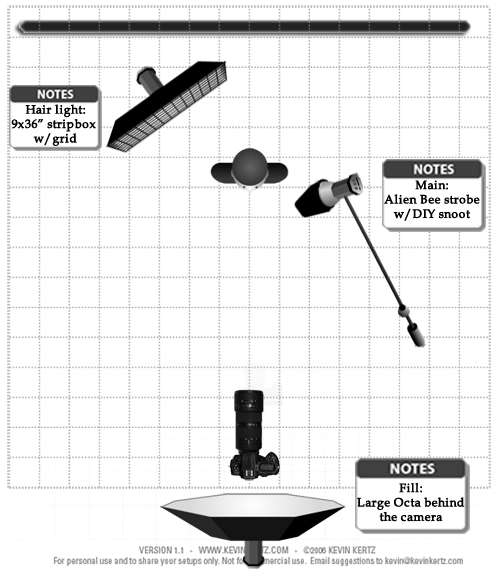As a CG Artist, I am constantly taking inspiration and ideas from everywhere. People have even written books on how to steal ideas from people, such as "How to Steal Like an Artist" by Austin Kleon. It is an engaging read; I suggest you read it. Plenty of fun, otherwise.
So, I research, and research, and research. And, eventually, I find some gems like the one I found today. Basically, I discovered how Hollywood lights their scenes. Not just for dramatic photos, like the one below, but everything. The lighting technique is fairly simple to pull off and very effective. The funny thing is that people won't really notice the difference.
 |
| Credit: Aaron Ziltener |
It is just an extremely typical test scene. No big deal. It took about ten minutes to render on my computer, using approximately 20% of the CPU. (I was rendering another project at the time) It looks decent, thanks to the Cycles rendering engine, and I was pleased. Then, I tried the Hollywood lighting which looks a lot like this.
Ignore all the notes. The basic idea is that you have three light sources: The backlight, which is behind the camera, The background lighting, which is behind the subject, and the side light, which gives the profile appearance.
You can see all the elements inside the picture. The side lighting in the profile of the face and the cast shadows to the right, the backlight is lighting the front and you can see details of the body and hands because of it, and the most subtle effect of all, the background light. You can see it in slight details of the hair, and fuzziness of edges that would otherwise be sharp, such as on the arm.
So, I applied these principles to my test scene.
Now, you probably don't really notice any difference. And that is because the difference is very, very subtle. But, the second picture is a better-lighted scene.
Let me put them next to each other for you:
See the difference?
For more information on lighting, visit http://www.sekonic.com/whatisyourspecialty/photographer/articles/the-five-basic-portrait-lighting-setups.aspx





No comments:
Post a Comment